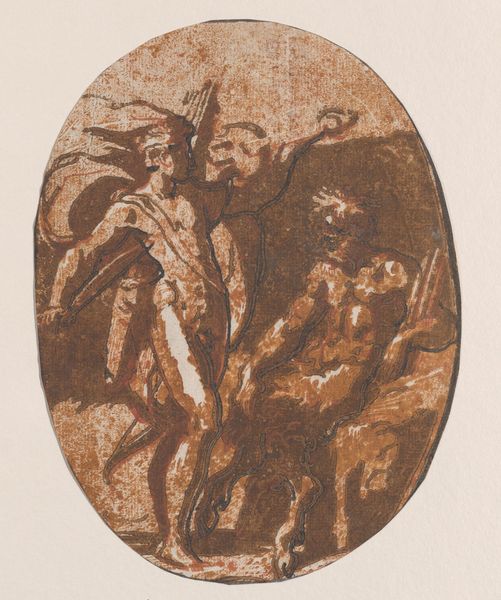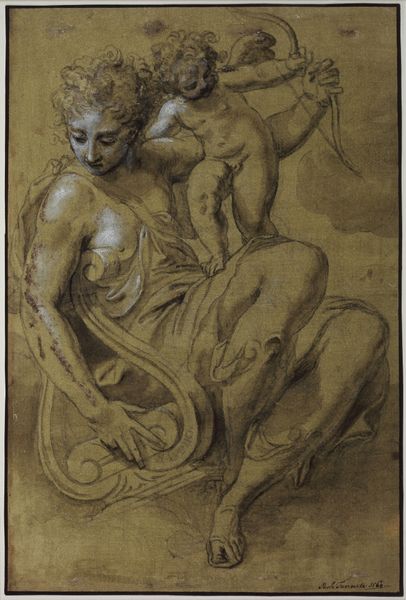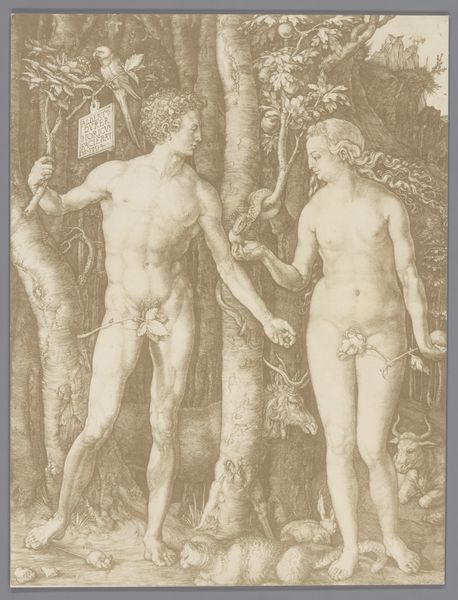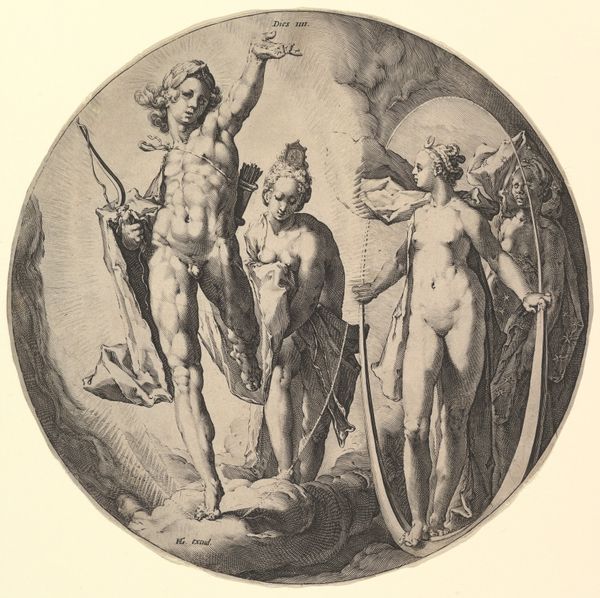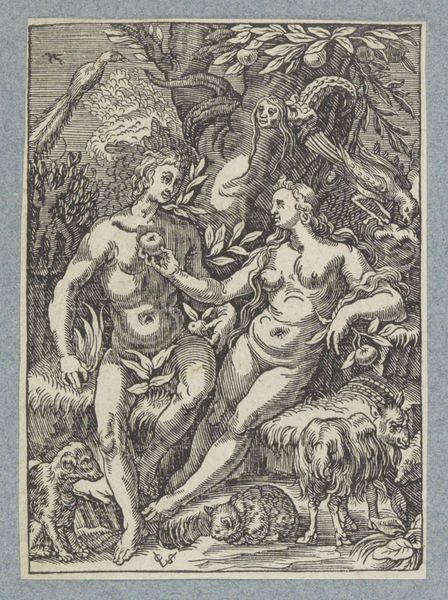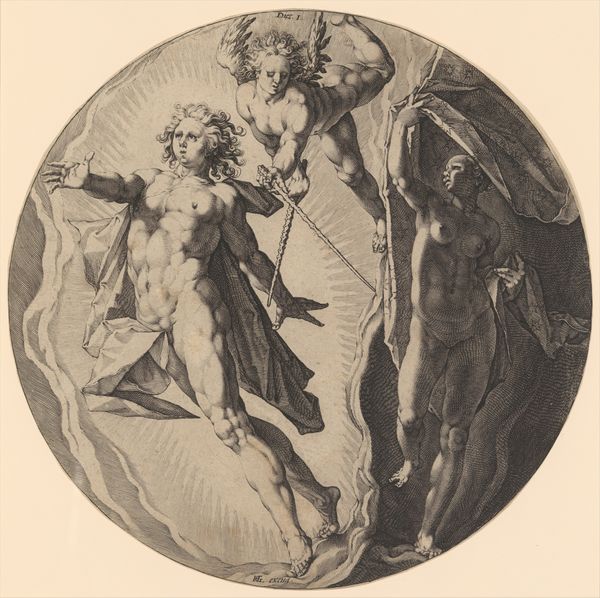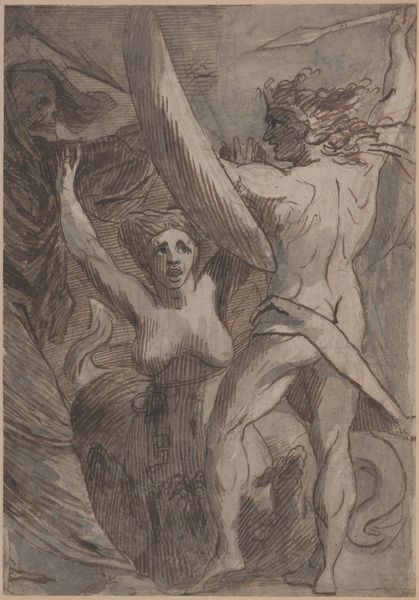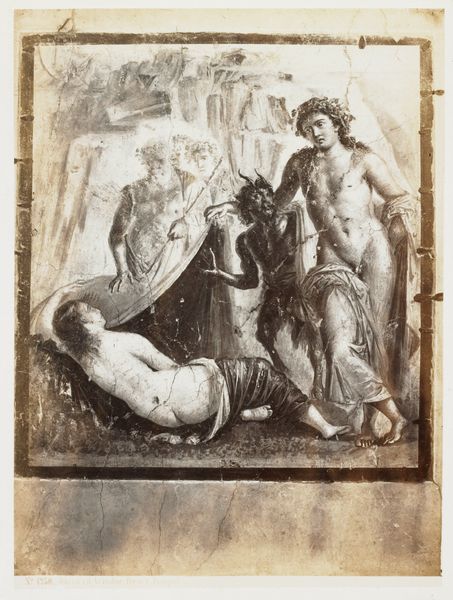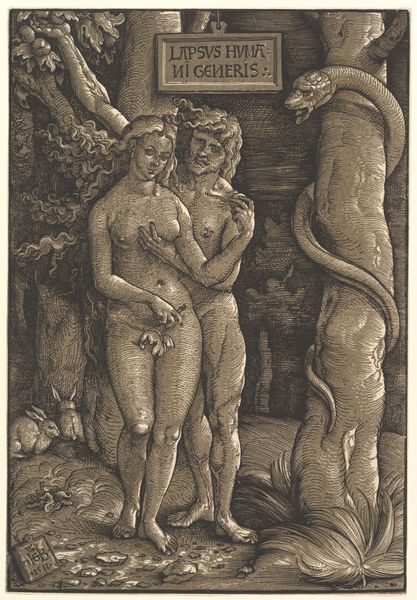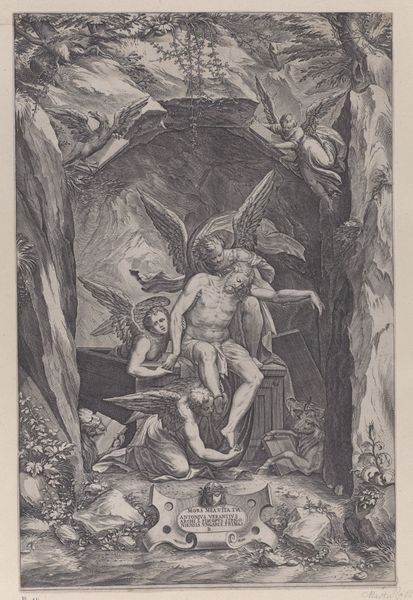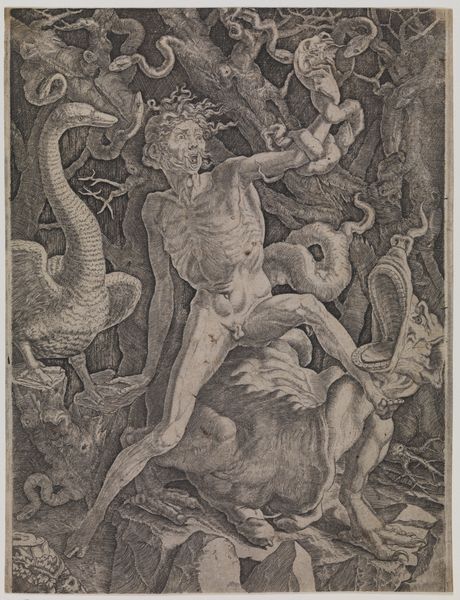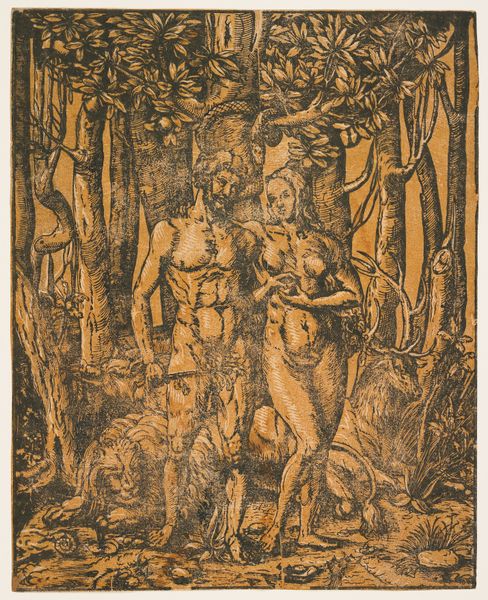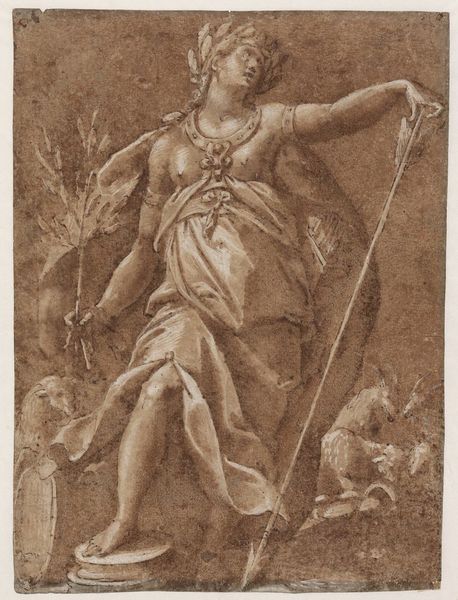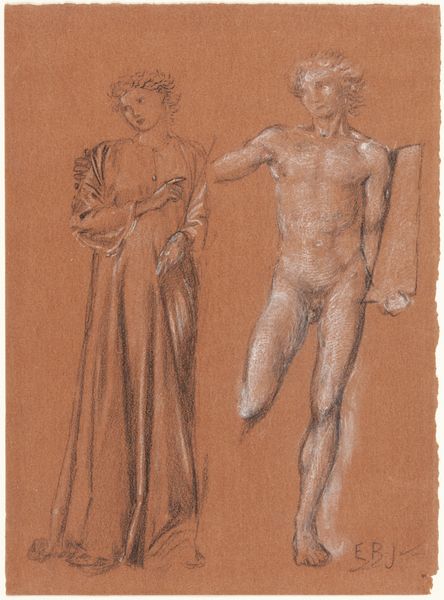
relief, bronze, sculpture
#
sculpture
#
relief
#
bronze
#
figuration
#
11_renaissance
#
sculpture
#
history-painting
#
nude
Dimensions: overall: 19.3 x 14.9 cm (7 5/8 x 5 7/8 in.) gross weight: 1129 gr
Copyright: National Gallery of Art: CC0 1.0
Editor: This bronze relief, "Orpheus and Eurydice," was crafted around 1515 by Peter Vischer the Younger. The figures seem caught in a moment of fraught exchange. How do you interpret the emotional weight carried within the imagery? Curator: Consider the power of the Orpheus myth. He gazes lovingly at Eurydice but remember the narrative: he cannot look back until they both have safely returned to the world of the living. Visually, Eurydice fades into the darkness and Orpheus remains poised between his skill (his instrument), his desire and what cultural memory decrees must be. This work operates as a visual and emotional crossroads, no? What strikes you most about that compositional divide? Editor: The space between them feels charged, definitely. I’m drawn to how Orpheus’s hope seems to pull him forward, and yet that dark abyss seems almost predatory. Curator: Absolutely. Renaissance artists were fascinated by the power of classical narratives. The figures here are caught between worlds, both literal and symbolic. Doesn't Orpheus's lyre represent not just artistic skill, but the fragile hope of resurrection and the enduring power of love in the face of death? It’s about emotional, psychological, and symbolic continuity. Editor: It is, when you describe the symbols present, the piece definitely gains a richer, darker, significance. Curator: Indeed, by considering the weight and emotional narrative behind these figures and their composition we see that the piece embodies something greater than the immediate. Thanks for walking through it with me. Editor: And thank you, that definitely helped deepen my appreciation for its many meanings.
Comments
No comments
Be the first to comment and join the conversation on the ultimate creative platform.
